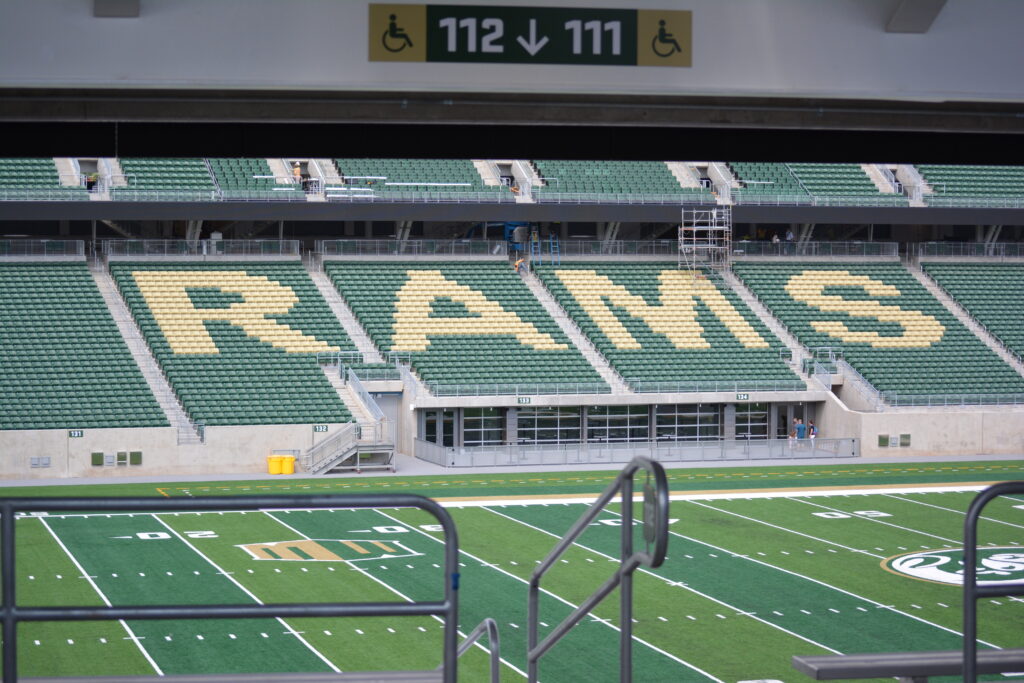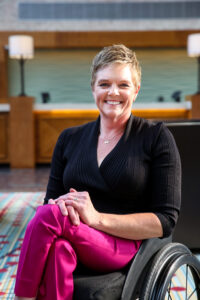
According to the Centers for Disease Control and Prevention (CDC), 26 percent of adults in the United States — or a total of 61 million people — have some type of disability. Of those 61 million Americans, only 17 percent are born with their disability while 83 percent acquire their disabilities through a health diagnosis or injury.
People with disabilities are as diverse as those without. There are a wide range of disabilities, causes, and levels of function, based on the disability type and when it was acquired. The community encompasses those with physical disabilities (mobility impairments), blindness/vision loss, Deaf/hard of hearing, invisible disabilities (epilepsy or diabetes), sensory disabilities (Autism, ADHD), intellectual disabilities and many others.
This year, the Rehabilitation Act of 1973 — a landmark piece of legislation that prohibits discrimination on the basis of disability by federal and federally funded programs — celebrates its 50th anniversary. Any organization, agency or business that receives federal funding falls within the parameters of the Rehab Act, and it outlines the rights individuals with disabilities have to participate in and have access to that organization’s benefits and services.
Another landmark disability law — the Americans with Disabilities Act (ADA) — went into effect nearly 33 years ago. The ADA is the civil rights law for individuals with disabilities, and prohibits discrimination against, or segregation of, people with disabilities in all activities, programs, or services — not just those that receive federal funding. Expanding on the rights within the Rehab Act, the ADA is wide-reaching, creating access and opportunities to all public spaces for the disabled.
Sponsored Content
Despite these critical laws protecting the civil rights of the disabled, much more work needs to be done to create truly inclusive experiences within the sport community, and those accessing sport facilities and venues.
Simple Strategies for Inclusion
International Disabilities Advocate Diane Richler states that inclusion is not a strategy to help people fit into the systems and structures that exist in our societies; it is about transforming those systems and structures to make it better for everyone. Inclusion is about creating a better world for all of us.
Given the legislation prohibiting discrimination, the size and diversity of the disability community and the definition of inclusion, how do sport leaders effectively create inclusive experiences for disabled fans?
There are number of simple and affordable strategies for sport leaders to consider and implement to ensure all spectators attending an event have a positive experience:
Be Proactive
When building a new multiuse or sport-focused complex, be proactive in your design. Engage architects, designers and contractors that go beyond basic ADA compliance and minimal building code requirements. Look to build a facility based on Universal Design (UD) principles.
UD ensures that a venue will be usable by all people, to the greatest extent possible by all people regardless of their ability or disability. UD is often mistaken as a synonym for ADA compliance. However, UD aspires for a place beyond compliance centered on meaningful inclusion of people without individualized or separate accommodations.
Many may be concerned that UD is too expensive to fit within a budget. But, in actuality, UD creates a space that is usable for all for years to come. UD spaces decrease stress for disabled fans as they know they will have proper access at an event and can enjoy watching their favorite team with minimal to no barriers — just like everyone else.
Starting a project or updating a facility with UD principles will decrease the need for extra expenses for renovations and retrofits across multiple budget cycles. Do it right the first time and there won’t be a need for additional expenses.
Nothing About Us Without Us
The disabled community lives by the motto, “Nothing about us without us.” In order to know what your disabled fans want or need for a positive spectator experience, engage them in creating those experiences. Invite a diverse group of fans and community members with a wide array of disabilities to determine accessibility. Some scenarios to consider:
- When purchasing tickets online, are fans with visual impairments able to navigate the ticket website? Are there a variety of accessible seating options that provide equal opportunities in location and price (including club seating and suites)?
- What accessible transportation options do disabled fans have for getting to the game? Are rideshare drop-offs accessible? Are there plenty of accessible parking spaces close to the venue? Are nearby bus stops or train stations accessible? Many with disabilities may have difficulty walking long distances, especially in inclement weather.
- What can disabled fans expect once they get to the venue? Is signage/wayfinding easy to understand? Are sightlines unobstructed when the crowd stands up during the game? Are ticketing gates, elevators, concessions and restrooms easy to access?
- How easy is it for disabled people to exit the venue once the event is over?
Create a checklist of the various steps that disabled fans must navigate when they attend an event. Don’t guess what the disabled community needs — include those with lived experience in the process.
Keep Your Diverse Fan Base Engaged
According to the CDC, two in five adults age 65 and older have a disability. As devoted fans, a majority of them will likely experience disabling conditions. Attending your games and events may be some of the few social activities for which they still look forward. Be intentional and creative in your efforts to keep them engaged.
If one of your supporters has a stroke and isn’t able to walk down multiple stairs, what’s your plan for creating opportunities for them to be included in the game experience? Are there golf carts or shuttles that can pick them up at accessible parking spots to minimize the amount of walking needed to access their seats? Help them save their energy for cheering on their favorite team.
Leverage Technology to Create Positive Experience
As facilities upgrade their technology within complexes, determine ways to make spectator communication accessible and inclusive. Is captioning available for the duration of an event? Are ASL interpreters on facility-wide screens? Are there visual or audible cues that engage fans who are deaf or visually impaired?
Disability Education and Awareness
Provide all facility staff and volunteers with foundational training focused on disability etiquette and awareness to ensure interactions with disabled fans emphasize understanding, dignity and respect. It’s critical that staff and volunteers have a basic understanding of inclusive language, addressing both attitudinal and architectural barriers, adapting to and providing creative solutions.
A Win-Win for Everyone
Inclusion is not just the “right thing to do” — it’s good for the bottom line. Estimates suggest that people with disabilities constitute an emerging market in the United States of almost $500 billion in annual disposable income and a potential market of more than 210 million people when family members and caregivers are included. Economic research also notes that businesses, including the sport industry, are missing out on $34 billion due to lack of physical or digital access.
Disability inclusion and access are based on innovation, driving big ideas for change, and demonstrating justice and fairness. In a time when diversity, equity and inclusion is imperative, we must not only consider but engage the disabled community to ensure their needs as spectators are exceeded. Just as communities that prioritize disability inclusion have benefitted, your entire fan base wins when we create truly inclusive venues and experiences.
 Dawna Callahan has been involved with adapted sport professionally for more than 20 years. In 2017, she founded All In Sport Consulting, a consulting firm that leads organizations in creating life-changing opportunities for people with disabilities through adapted sport. She has worked with numerous nationally and internationally known clients including the U.S. Center for SafeSport, Augusta Sports Council, Lakeshore Foundation and The World Games Inclusion Initiative, USA Boxing, and USRowing. Her career also includes positions with the Challenged Athletes Foundation (CAF), the United States Olympic Committee, Paralympic Division, Disabled Sports USA, and Adaptive Sports USA. In 2020, she created the Adapted Sport Leadership & Business Symposium (LABS), an annual conference that connects leaders from the adapted sport industry and beyond for progressive sessions and meaningful conversations to advance the adapted sport movement and expand its impact.
Dawna Callahan has been involved with adapted sport professionally for more than 20 years. In 2017, she founded All In Sport Consulting, a consulting firm that leads organizations in creating life-changing opportunities for people with disabilities through adapted sport. She has worked with numerous nationally and internationally known clients including the U.S. Center for SafeSport, Augusta Sports Council, Lakeshore Foundation and The World Games Inclusion Initiative, USA Boxing, and USRowing. Her career also includes positions with the Challenged Athletes Foundation (CAF), the United States Olympic Committee, Paralympic Division, Disabled Sports USA, and Adaptive Sports USA. In 2020, she created the Adapted Sport Leadership & Business Symposium (LABS), an annual conference that connects leaders from the adapted sport industry and beyond for progressive sessions and meaningful conversations to advance the adapted sport movement and expand its impact.












 Copyright © 2025 by Northstar Travel Media LLC. All Rights Reserved. 301 Route 17 N, Suite 1150, Rutherford, NJ 07070 USA | Telephone: (201) 902-2000
Copyright © 2025 by Northstar Travel Media LLC. All Rights Reserved. 301 Route 17 N, Suite 1150, Rutherford, NJ 07070 USA | Telephone: (201) 902-2000